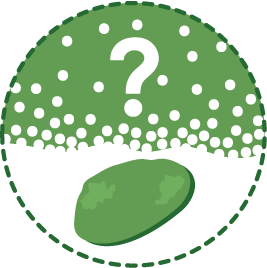Project team: Scotte Wedderburn (University of Adelaide)
Project team: Ngarrindjeri Aboriginal Corporation, Ngarrindjeri community, Julie Jones, Ray Rootsey, Allison Rootsey (River Lakes and Coorong Action Group), Sylvia Zukowski (Nature Glenelg Trust), Rhiannon Van Eck, Bronwyn Gillanders (University of Adelaide), Malcolm Connolly, Brenton Zampatti, Laura Markham (CSIRO)

Freshwater mussels are one of the most at-risk groups of animals in the world, with almost half of all species extinct or threatened. Freshwater mussels are excellent indicators of the environmental health of river systems, particularly water quality. Lokeri (Velesunio ambiguous) is one of 18 species of freshwater mussel in Australia, and it occurs over most of eastern Australia including in the Lower Lakes of the Murray-Darling Basin (MDB). The consequences of changes to river flows and water quality are the main causes of decline in freshwater mussel populations.
The citizen-science project is strongly linked to community concern and the significance of Lokeri to Ngarrindjeri culture. Based on anecdotal information, the Lokeri population of the Lower Lakes has not recovered since the Millennium Drought. The project is garnering the interest of landholders, community groups and the Ngarrindjeri community to redress the deficiency in knowledge regarding Lokeri in the Lower Lakes.
This project included the first targeted surveying for the species in decades, with the aim of determining if and where the species currently occurs in the Lower Lakes. Citizen scientists worked with ecologists to sift through mud to identify and collect Lokeri at sites revealed during the survey. This has allowed determination of the status (e.g. age structure, recruitment) of the Lokeri population in the Lower Lakes. The project is also attempting to age a subset of sampled individual to help examine growth The growth and ageing data will establish a method to inform management of the lakes, particularly the use of water for the environment.
The project had strong community and First Nations involvement in planning and execution of field and laboratory work (data collection) and delivery of the objectives. The deep connection between Ngarrindjeri people and Country, including the CLLMM region, means they are heavily invested in projects of this type due to an inherent obligation to care for all plants and animals. Two lakeside yarning circles helped to gather the perspectives of the Ngarrindjeri community.
The project will summarise the current status of Lokeri across the CLLMM region. . Information generated by the project through the CLLMM Research Centre will help instigate further research to improve management and decision-making. This project will provide a platform to include community and First Nations in planning for future changes to the region.
First Nations culture and traditions are rooted within an ancient historical connection with country and countless generations of studying their local environment as a way of life. First Nations traditional ways of life, including land and water management, sustainable harvesting, and the conservation of local species can provide vital perspectives into the ways we manage the lands and waters into the future.
This project will work towards restoration, adaptation, connection and impact reduction on the cultural traditions, history, obligations and significance associated with Lokeri (floodplain mussel) populations in the CLLMM region. First Nations people believe in ‘the living body’, comprise of the land (Ruwe), water (Ma:rnmani), people (Palak), and animals and plants (Nga:tjar) of the region. The body works in a delicate balance that if distributed, can disrupt life on a large scale. This belief and knowledge system underpin the significance of waterbirds within the CLLMM region. First Nations people have a responsibility to care for Nga:tjar such as Lokeri.
By monitoring Lokeri populations in the Lower Lake, First Nations people will better understand and connect with the Lokeri and the cultural traditions and histories surrounding them, such as using them as a food source, or through their significance in water filtration. Improving water quality and clarity has been previously noted as a primary concern by the Ngarrindjeri community, with hopes that this will have subsequent benefits to the broader ecosystem as a result. Restoring Lokeri populations or mitigating the effects of climate change to the broader ecosystem as a result. Restoring Lokeri populations or mitigating the effects of climate changes on them may play an important role in improving or maintaining water quality of the CLLMM in the future.